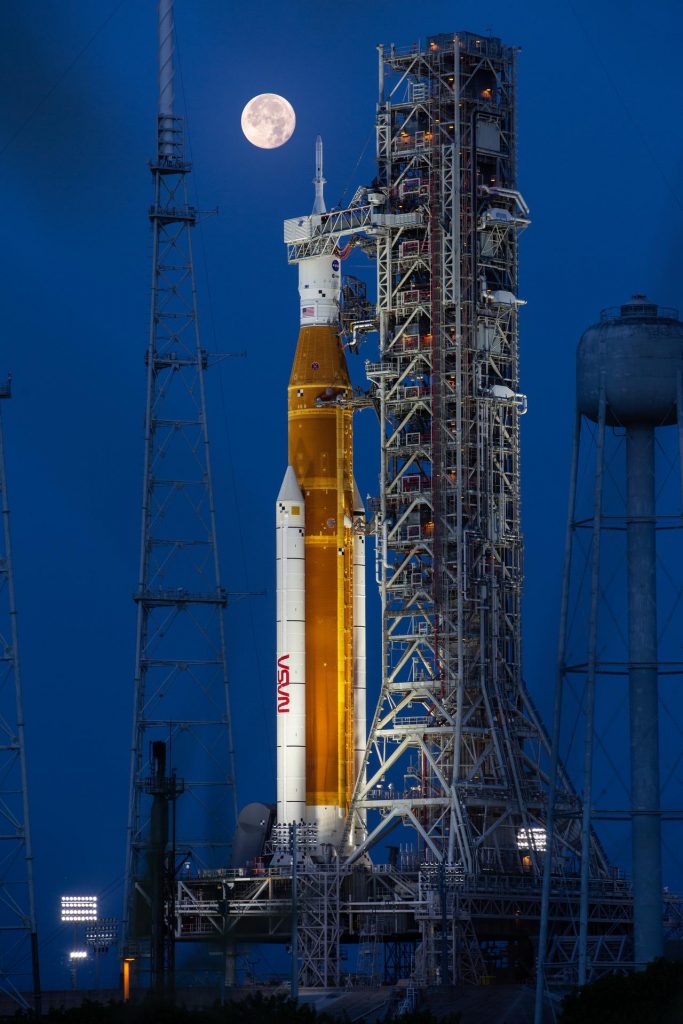
Nighttime rollout set for Friday
Artemis 1 is NASA’s 1st step in a human return to the moon. And the giant moonship was due for a test launch in September, but was delayed. Now the launch is scheduled again, for November 14. The rollout to Launchpad 39B at Kennedy Space Center in Florida is tomorrow (November 4, 2022). NASA’s giant moonship will start the long creep back to the launchpad 12:01 a.m. ET (4:01 UTC) on Friday.
NASA reported on October 28 that the ship has undergone minor repairs and maintenance, as it sheltered from Hurricane Ian in the Vehicle Assembly Building:
Testing of the reaction control system on the twin solid rocket boosters, as well as the installation of the flight batteries, is complete and those components are ready for flight.
Engineers also have replaced the batteries on the interim cryogenic propulsion stage (ICPS), which was powered up for a series of tests to ensure the stage is functioning properly. Teams successfully completed final confidence checks for the ICPS, launch vehicle stage adapter and the core stage forward skirt.
NASA schedules nighttime launch for Artemis 1
Artemis 1 is due to go up from Kennedy Space Center in Florida – without human passengers this time – at 12:07 a.m. ET (4:07 UTC) on November 14, 2022. It could be a spectacular light show as Artemis 1 blasts off into the midnight sky.
The launch of Artemis 1 has faced repeated delays. The lunar mission was supposed to fly on September 27, but then Hurricane Ian hit. Before that, a leak in one of the fuel tanks caused delays.
NASA announced the update to the launch time and date via its Artemis blog. There’s a 69-minute launch window. The agency said its mighty Space Launch System (SLS) – consisting of a rocket that’s taller than the Statue of Liberty, with the Orion crew capsule on top – is essentially still ready to fly following the most recent launch abort on September 27.
Should NASA stand down on November 14, they have two backup dates planned. Both are also nighttime launches:
NASA has requested backup launch opportunities for Wednesday, November 16, at 1:04 a.m. and Saturday, November 19, at 1:45 a.m., which are both two-hour launch windows. A launch on November 14 would result in a mission duration of about 25-and-a-half days with a splashdown in the Pacific Ocean Friday, December 9.
The Artemis 1 story so far …
In case you haven’t been following it … Artemis 1 is the first of three missions planned to send humans back to the moon by the middle of this decade. It’s exciting … and difficult. Artemis 1 has all the dazzle of the earlier race to the moon in the 1960s … a giant rocket, with powerful thrust and an unmatched element of daring. It’s a big undertaking.
Of course, spaceflight fans are disappointed by the failure to launch so far. But many tempered their upset with good humor. And, as NASA officials said on September 3:
We won’t launch until we’re ready.
What Artemis 1 will do
Artemis 1’s objective is partly to test NASA’s Space Launch System – aka SLS – a vehicle comparable to the great Saturn V that carried the first astronauts to the moon in the Apollo program of the ’60s and ’70s.
SLS is far more advanced than the Saturn V, technologically. But its main purpose is thrust. SLS will produce 8.8 million pounds (3.9 million kg) of thrust during liftoff and ascent, 15% more than the Saturn V. It’ll need that much thrust to loft a vehicle weighing nearly 6 million pounds (2.7 million kg) to orbit. Propelled by a pair of five-segment boosters and four RS-25 engines, the rocket will reach the period of greatest atmospheric force within 90 seconds, NASA says. After jettisoning its boosters, service module panels and launch abort system, the core stage engines will shut down. At that point, the core stage will separate from the Orion spacecraft.
The Orion moonship is known officially as the Orion Multi-Purpose Crew Vehicle or Orion MPCV. It’ll go to Earth orbit atop SLS following launch. There, it’ll deploy its solar arrays and the Interim Cryogenic Propulsion Stage (ICPS) that’ll give the craft the big push needed to leave Earth’s orbit and travel toward the moon.
Not Orion’s first voyage
Orion already underwent an Earth-orbiting test in 2014, so this isn’t its first voyage to space. But it is its first trip to the moon, and it’ll get there via propulsion by a service module provided by the European Space Agency. The service module will supply the spacecraft’s main propulsion system and power (as well as house air and water for astronauts on future missions).
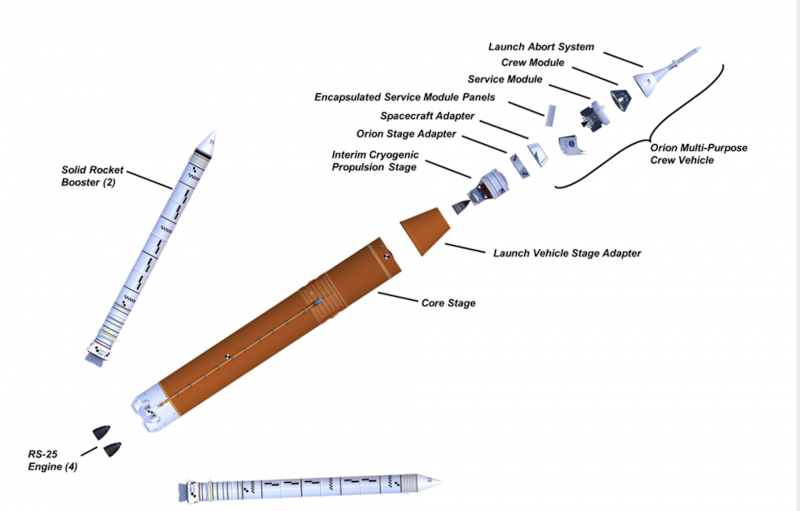
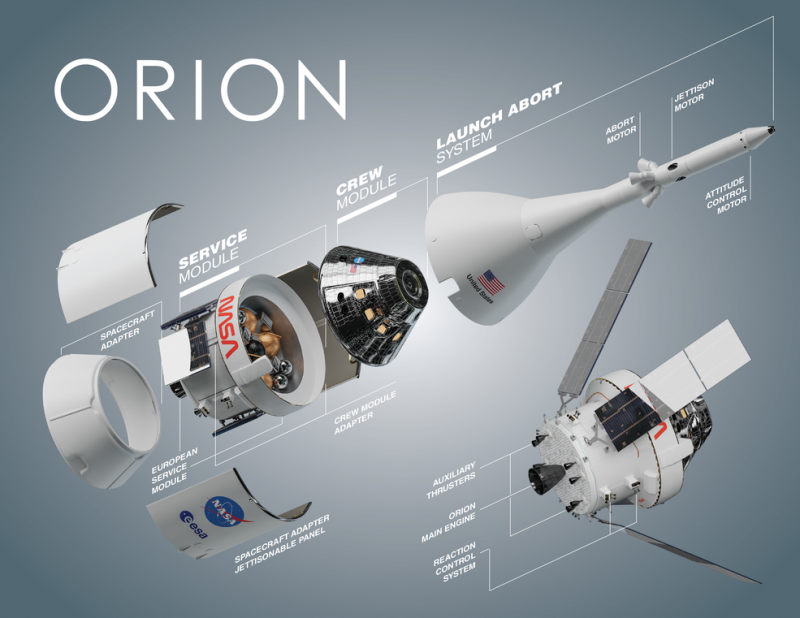
Orion’s mission
Orion will fly as close to the moon’s surface as about 62 miles (100 km). It’ll use the moon’s gravity to propel itself into an orbit about 40,000 miles (70,000 km) from the moon.
The spacecraft will stay in that orbit for about six days, collecting data. During that time, mission controllers will assess its performance. Then it’ll perform a second close flyby of the moon, coming within about 60 miles (100 km). Another precisely timed engine firing of the European-provided service module – in combination with the moon’s gravity – will accelerate the moonship back toward Earth. It’ll enter our planet’s atmosphere traveling at 25,000 mph (11 km/second), producing temperatures of approximately 5,000 degrees Fahrenheit (2,760 degrees Celsius). So it’ll go faster – and get hotter – than during its 2014 flight test.
In all, the mission will last about a month and travel a distance of 1.3 million miles. It’s expected to make a precision landing within eyesight of the recovery ship off the coast of San Diego, California.

What’s in the crew capsule?
The Orion moonship won’t have a human crew during Artemis 1. Instead, a mannequin dressed in a bright orange spacesuit known as the Orion Crew Survival System will occupy the commander’s seat. NASA says the special suit is:
… designed for a custom fit and equipped with technology features to help protect astronauts on launch day, in emergency situations, throughout high-risk parts of missions near the moon, and during the high-speed return to Earth.
In addition, there will be two other “passengers,” two identical mannequin torsos equipped with radiation detectors. The Israel Space Agency and the German Aerospace Center designed this part of the mission. It’s an experiment to test the AstroRad radiation protection vest, which will provide data on radiation levels.
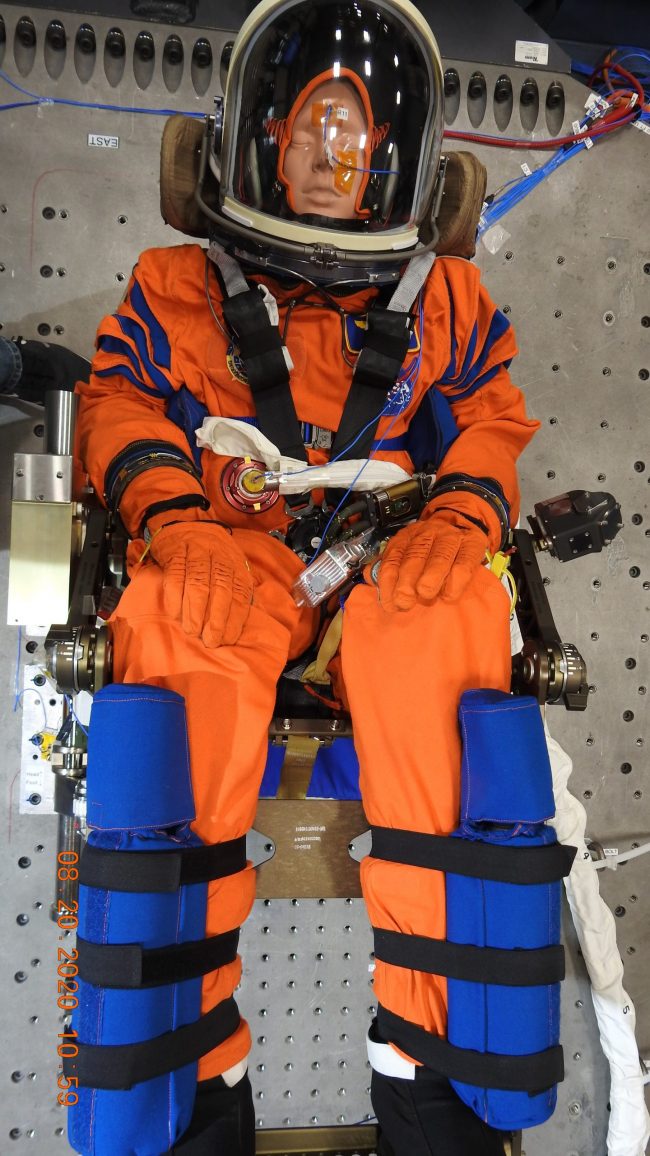
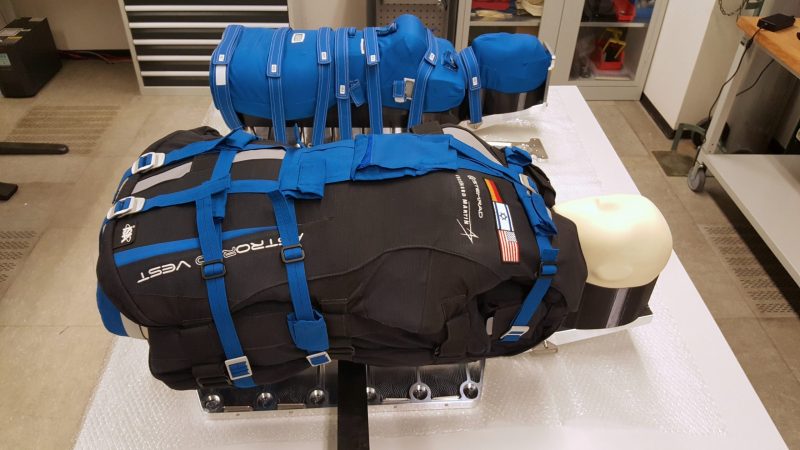
Snoopy will travel on Artemis
Engineers will strap in the mannequin and mannequin torsos. But NASA is also flying a “zero gravity indicator” in the form of a Snoopy cuddly toy, also dressed in an iconic orange NASA jumpsuit. The comic-book character Snoopy was a household name in the 1960s and ’70s, when the Apollo missions were flying. And Apollo 10 astronauts traveled to the moon for a final checkout, prior to the first human moon landing with Apollo 11 on July 20, 1969. Apollo 10 skimmed to within 50,000 feet of the moon’s surface, to “snoop around” (scout the Apollo 11 landing site). So, the crew named its lunar module “Snoopy.”
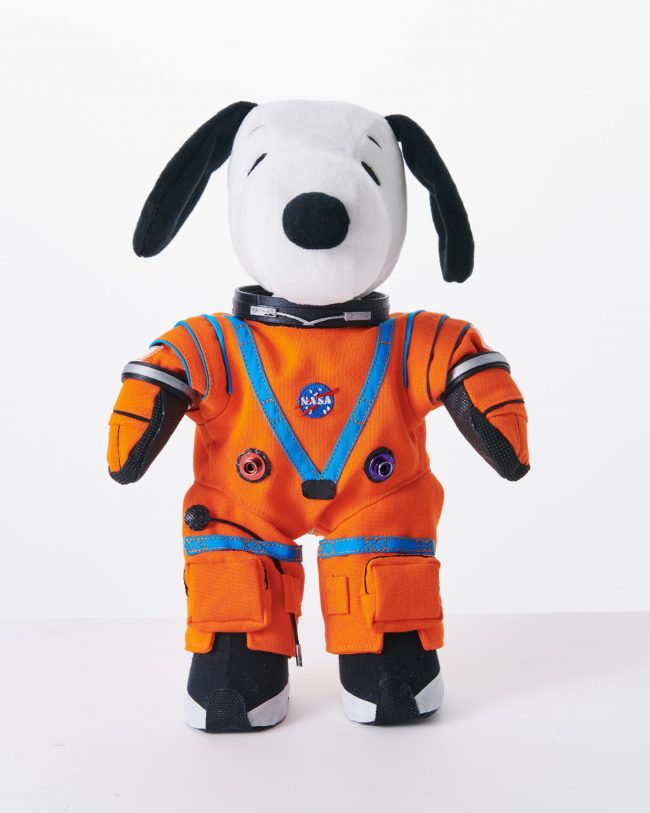
There have been delays
Many earthly spacecraft have visited the moon, but it has been 50 years since humans have walked its surface. And space visionaries have been dreaming for decades of a return to the moon. Although NASA first announced the Artemis program in December 2017, the development of the Orion crew capsule and the powerful SLS began earlier, in 2011. SpacePolicyOnline reported on March 14, 2022:
The first flight of SLS/Orion has been delayed again and again. In 2014, NASA committed to the first launch in November 2018. That slipped to December 2019-June 2020, then to mid-late 2021 and then to 2022. Now, at long last, they are almost ready to take flight.
Read more SLS/Orion history at SpacePolicyOnline, if you’re interested.
A return to the moon
Ultimately, the Artemis program aims to send the first humans back to the moon by the middle of this decade. When they go, they’ll be aiming for the moon’s south pole, a place that scientists have discovered in recent decades has large amounts of water ice. Water contains oxygen, so processing it will make it possible for future astronauts to stay longer.
Someday, visionaries still hope, we will have a permanent presence on the moon. And we will go to Mars.
Such dreams are an integral part of humanity’s natural wanderlust in the 21st century. And so future historians might look back at our time – and at the Artemis missions – as the moment humanity took a true giant leap to space, maybe this time for good.
We are going.
As @NASA prepares to send astronauts to the Moon under #Artemis, we have identified 13 candidate landing regions near the lunar South Pole.
Learn about the landing regions and what sets them apart: https://t.co/XagoqjMi9b pic.twitter.com/lUwJun9yh0
— NASA Artemis (@NASAArtemis) August 19, 2022
Get a visual of what Artemis will be doing
The trajectory for the Artemis mission has been updated by @NASAJPL Horizons following Monday’s cancelled launch. #Artemis is now scheduled to launch on Saturday, Sep 3, and return on Oct. 11. @NASAJPL @NASAArtemis pic.twitter.com/9TgWFzTPjH
— Tony Dunn (@tony873004) August 31, 2022
Bottom line: NASA will attempt to launch the SLS on the Artemis 1 mission on November 14, 2022. Roll out begins on Friday, November 4.
The post Artemis 1 to launch soon, rolling out Friday first appeared on EarthSky.
0 Commentaires